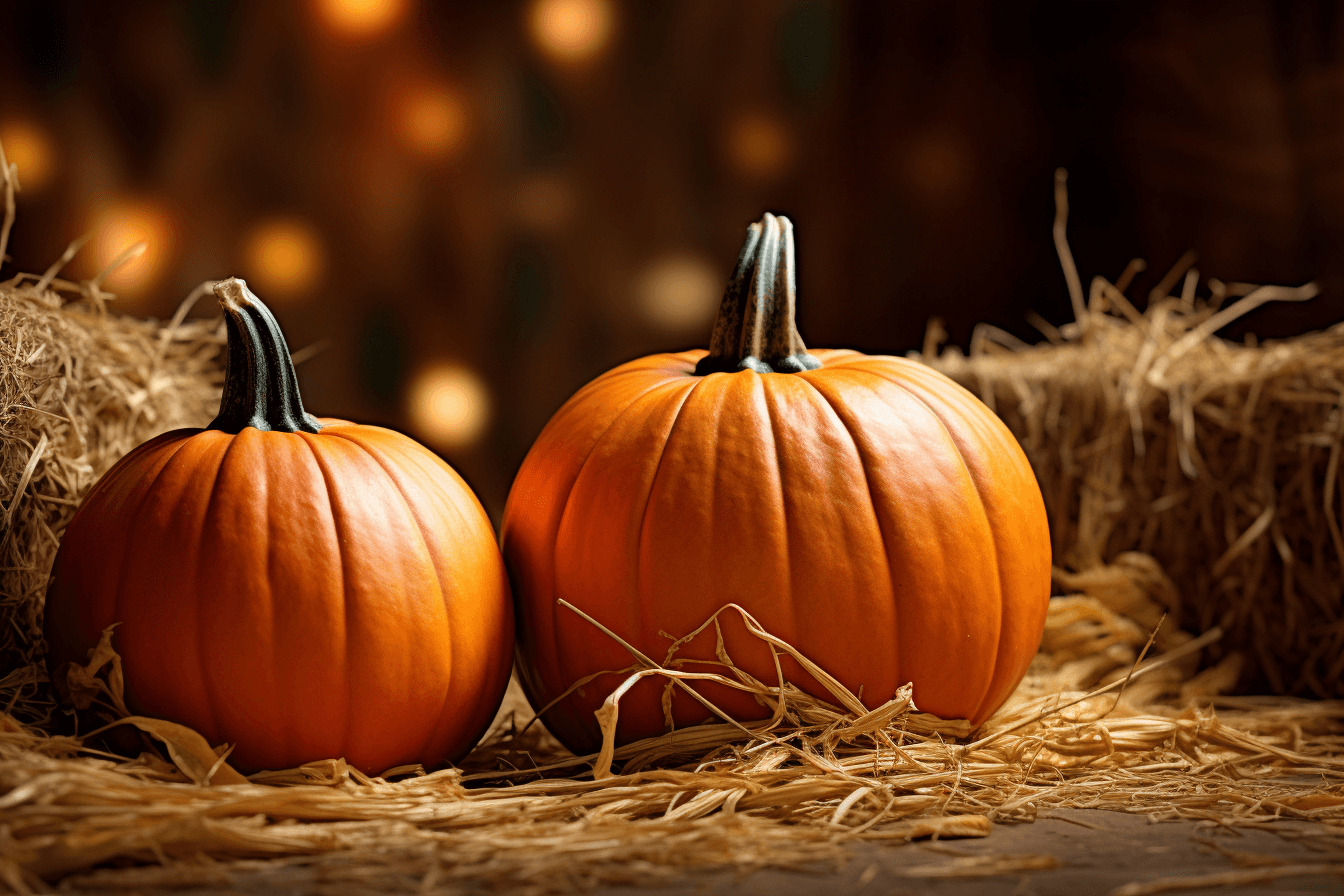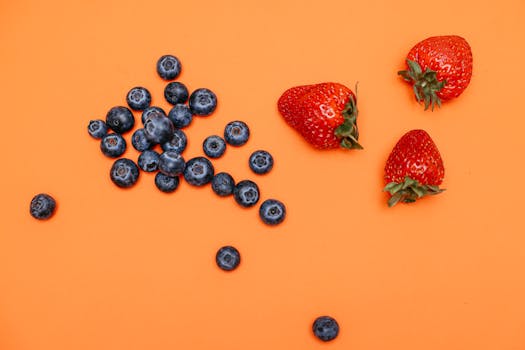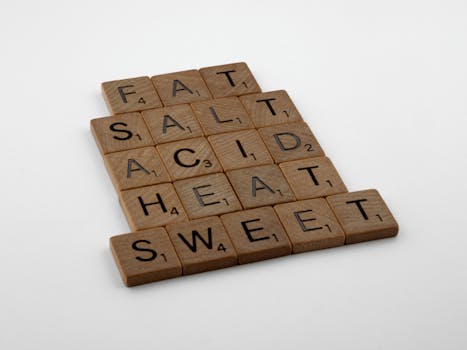Sugar Pumpkin: The Sweet Secret to Perfect Pies and More
Oct 3, 2024
As autumn leaves begin to fall and the air turns crisp, thoughts often turn to cozy sweaters, warm beverages, and of course, pumpkins. But not all pumpkins are created equal, especially when it comes to cooking and baking. Enter the sugar pumpkin – a variety that's small in size but big on flavor and versatility. In this comprehensive guide, we'll explore everything you need to know about sugar pumpkins, from their unique characteristics to their culinary uses and nutritional benefits.
What is a Sugar Pumpkin?
Sugar pumpkins, also known as pie pumpkins or sweet pumpkins, are a specific variety of pumpkin prized for their sweet flavor and smooth, dense flesh. Unlike their larger cousins typically used for jack-o'-lanterns, sugar pumpkins are specially cultivated for culinary purposes.
Key Characteristics of Sugar Pumpkins:
Size: Generally smaller, ranging from 2-8 pounds
Shape: Usually round or slightly oblong
Color: Deep orange with a smooth, firm exterior
Flesh: Fine-grained, less stringy, and sweeter than regular pumpkins
Seeds: Fewer seeds compared to carving pumpkins
What's the Difference Between a Sugar Pumpkin and a Regular Pumpkin?
The main differences between sugar pumpkins and regular (or field) pumpkins lie in their size, texture, and flavor profile:
Size: Sugar pumpkins are typically much smaller, making them easier to handle in the kitchen.
Flesh Texture: Sugar pumpkins have a finer, less stringy texture, ideal for purees and baking.
Flavor: As the name suggests, sugar pumpkins are naturally sweeter and have a more concentrated pumpkin flavor.
Water Content: Sugar pumpkins have less water content, resulting in a firmer, more cookable flesh.
Seed-to-Flesh Ratio: Sugar pumpkins have a higher flesh-to-seed ratio, giving you more usable pumpkin per fruit.
These differences make sugar pumpkins the preferred choice for cooking and baking, while larger field pumpkins are better suited for decorative purposes and carving.

What Are Sugar Pumpkins Good For?
Sugar pumpkins are incredibly versatile in the kitchen. Their sweet flavor and smooth texture make them ideal for a wide range of culinary applications:
Pies: The classic use for sugar pumpkins is in pumpkin pies, where their natural sweetness shines.
Baked Goods: They're excellent in muffins, breads, cookies, and cakes.
Soups and Stews: Their smooth texture makes them perfect for creamy soups and hearty stews.
Roasting: Roasted sugar pumpkin makes a delicious side dish or addition to salads.
Purees: Use sugar pumpkin puree as a base for sauces, dips, or even as a nutritious addition to smoothies.
Curries and Savory Dishes: Their sweet flavor pairs well with spices in curries and other savory dishes.
Decoration: While not their primary use, small sugar pumpkins can make charming seasonal decorations.
How to Tell if it's a Sugar Pumpkin
Identifying a sugar pumpkin can be tricky if you're not familiar with their appearance. Here are some tips to help you spot a sugar pumpkin:
Size: Look for pumpkins that are smaller, typically 6-8 inches in diameter.
Color: Sugar pumpkins usually have a deep, rich orange color.
Stem: The stem should be sturdy and brown, not green (which indicates immaturity).
Weight: They should feel heavy for their size, indicating dense flesh.
Skin: The skin should be firm and free from blemishes or soft spots.
Shape: Most sugar pumpkins are round or slightly oblong, with minimal ribbing.
Label: In many stores, sugar pumpkins will be labeled as "pie pumpkins" or "sugar pumpkins."
Remember, when in doubt, ask your local grocer or farmer's market vendor for assistance in identifying sugar pumpkins.
Nutritional Profile: Are Pumpkins High in Sugar?
Despite their name, sugar pumpkins are not excessively high in sugar. In fact, they're quite nutritious and can be a healthy addition to your diet. Let's break down their nutritional profile:
Macronutrients (per 1 cup cooked, mashed pumpkin):
Calories: 49
Carbohydrates: 12 grams
Fiber: 3 grams
Protein: 2 grams
Fat: 0.2 grams
Sugar: 5.1 grams
Micronutrients:
Vitamin A: 245% of the Daily Value (DV)
Vitamin C: 19% DV
Potassium: 16% DV
Copper: 11% DV
Manganese: 11% DV
Vitamin B2: 11% DV
Vitamin E: 10% DV
As you can see, while pumpkins do contain natural sugars, they're not particularly high in sugar compared to many other fruits and vegetables. The sugar content is balanced by fiber, which helps slow the absorption of sugars into the bloodstream.
Does Pure Pumpkin Have Sugar?
Pure pumpkin, whether fresh or canned (with no added ingredients), does contain natural sugars. However, these are naturally occurring sugars, not added sugars. The amount of sugar in pure pumpkin is relatively low compared to many other fruits and some vegetables.
It's important to note that many commercial pumpkin products, such as pumpkin pie filling or flavored pumpkin purees, may have added sugars. Always check the label if you're monitoring your sugar intake.
How Much Sugar is in Raw Pumpkin?
Raw pumpkin contains approximately 2.8 grams of sugar per 100 grams (about 1/2 cup). This makes it a relatively low-sugar vegetable, especially when compared to fruits or starchy vegetables like sweet potatoes.
The sugar content can vary slightly depending on the specific variety of pumpkin and growing conditions, but generally, raw pumpkin is not considered a high-sugar food.
Cooking with Sugar Pumpkins
Sugar pumpkins are incredibly versatile in the kitchen. Here are some popular cooking methods:
Roasting: Cut the pumpkin in half, remove seeds, and roast at 350°F (175°C) for about 45-60 minutes until tender.
Steaming: Cut into cubes and steam for 15-20 minutes until soft.
Boiling: Boil cubed pumpkin for 15-20 minutes until tender.
Microwaving: Place halved pumpkin cut-side down in a microwave-safe dish with a bit of water. Microwave on high for 15 minutes or until tender.
Pureeing: After cooking, blend the pumpkin flesh until smooth for use in pies, soups, or as a nutritious addition to smoothies.
Remember, sugar pumpkins can be used in both sweet and savory dishes, from pies and muffins to soups and curries.
Health Benefits of Sugar Pumpkins
Sugar pumpkins aren't just delicious; they're also packed with nutrients that offer various health benefits:
Rich in Antioxidants: The bright orange color indicates high levels of beta-carotene, a powerful antioxidant.
Eye Health: The high vitamin A content supports good vision and eye health.
Immune Support: Vitamins A and C contribute to a healthy immune system.
Heart Health: Potassium, fiber, and antioxidants in pumpkin may support heart health.
Digestive Health: The fiber content aids digestion and promotes feelings of fullness.
Skin Health: Vitamins A and C contribute to healthy skin.
Weight Management: Low in calories but high in fiber, pumpkin can be a great addition to a weight management diet.
Sugar Pumpkin Recipes
Sugar pumpkins can be used in a wide variety of recipes. Here are a few ideas to get you started:
Classic Pumpkin Pie: The most traditional use for sugar pumpkins.
Pumpkin Soup: A creamy, comforting dish perfect for cool autumn days.
Roasted Pumpkin Seeds: Don't waste the seeds! Roast them for a healthy snack.
Pumpkin Bread or Muffins: A delicious way to start your day.
Pumpkin Curry: For a savory twist on pumpkin dishes.
Pumpkin Smoothie: Blend cooked pumpkin with banana, milk, and spices for a nutritious drink.
Pumpkin Risotto: A comforting, savory dish that's perfect for dinner parties.
Remember, when a recipe calls for canned pumpkin, you can usually substitute fresh sugar pumpkin puree. One 15-ounce can of pumpkin is equivalent to about 2 cups of homemade puree.
Growing Sugar Pumpkins
If you're interested in growing your own sugar pumpkins, here are some tips:
Planting: Sow seeds directly in the garden after the last frost, or start indoors 3-4 weeks before the last frost date.
Soil: Pumpkins prefer well-draining, fertile soil rich in organic matter.
Sun: They need full sun, at least 6 hours of direct sunlight daily.
Water: Keep soil consistently moist but not waterlogged.
Space: Allow plenty of room for vines to spread, typically 6-8 feet between plants.
Harvest: Sugar pumpkins are usually ready to harvest 90-110 days after planting when the skin is hard and deep orange.
Growing your own sugar pumpkins can be a rewarding experience and ensure you have a fresh supply for all your fall cooking needs.
Storing Sugar Pumpkins
Proper storage can help your sugar pumpkins last longer:
Whole Pumpkins: Store in a cool, dry place (50-60°F) for up to 3 months.
Cut Pumpkin: Wrap tightly in plastic wrap and refrigerate for up to 5 days.
Cooked Pumpkin: Store in an airtight container in the refrigerator for up to 5 days.
Frozen Pumpkin: Puree cooked pumpkin and freeze in airtight containers for up to 6 months.
Conclusion: Embracing the Versatility of Sugar Pumpkins
Sugar pumpkins are a true autumn treasure, offering a perfect balance of sweetness, nutrition, and versatility. Whether you're baking a classic pumpkin pie, experimenting with savory pumpkin dishes, or simply roasting some seeds for a healthy snack, sugar pumpkins provide endless culinary possibilities.
Their nutritional profile makes them a smart choice for health-conscious individuals, while their natural sweetness satisfies those with a sweet tooth. By choosing sugar pumpkins over regular carving pumpkins for your cooking needs, you're ensuring better flavor, texture, and overall results in your pumpkin dishes.
As you explore the world of sugar pumpkins, remember that they're just one part of a healthy, balanced diet. Pairing your pumpkin dishes with regular exercise and an overall balanced lifestyle is key to optimal health. Consider using a comprehensive approach to health and fitness, such as the personalized plans offered by Tidalflow's AI-powered personal trainer, to help you achieve your wellness goals.
So this autumn, why not pick up a sugar pumpkin or two? Whether you're continuing a long-standing family tradition of pumpkin pie baking or trying your hand at a new pumpkin recipe, these sweet little squashes are sure to add a delicious and nutritious touch to your fall cuisine. Happy cooking!
You should not have to do it all on your own













